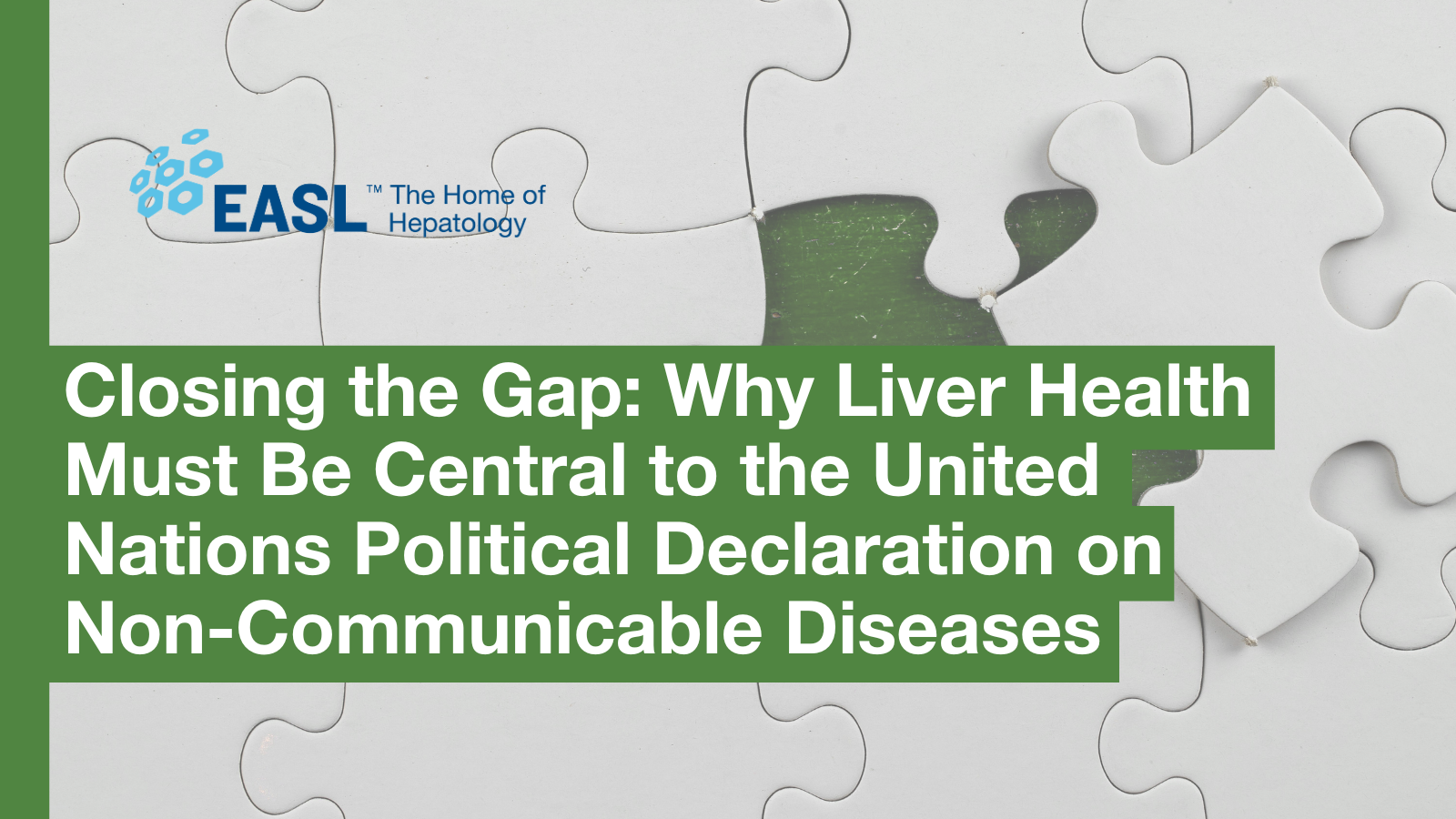Closing the Gap: Why Liver Health Must Be Central to the United Nations Political Declaration on Non-Communicable Diseases

New publication calls for liver health to be fully recognised within the global NCD agenda
A new publication by Aleksander Krag (Odense University Hospital, Denmark), Francesco Negro (University Hospital of Geneva, Switzerland), and Debbie L. Shawcross (King’s College London, United Kingdom) calls on world leaders to recognise liver health as a central component of the global response to non-communicable diseases (NCDs).
A Missed Opportunity at a Critical Moment
The 2025 UN Political Declaration sets ambitious global health targets, including a one-third reduction in premature NCD mortality by 2030. However, despite addressing key risk factors such as alcohol, obesity, and tobacco, the document fails to explicitly include liver disease—even though it is one of the main organs affected by these very drivers.
As the authors note, “Recognising these risk factors is encouraging, but the devil is in the detail — and one striking omission stands out: the recognition of steatotic liver disease as a core NCD.”
While the Political Declaration advances global health diplomacy and reaffirms commitments to reducing NCD risk, its failure to explicitly include Steatotic Liver Disease (SLD) — and the broader spectrum of liver diseases — represents a significant policy blind spot. This omission risks undermining prevention, early diagnosis, and treatment for millions of people worldwide.
Positive Progress — But an Incomplete Picture
The Declaration introduces several important measures that represent steps in the right direction. However, the publication highlights that SLD remains largely invisible within the current global health framework.
More than 1.5 billion people live with liver disease, and MASLD alone affects one in three adults worldwide. Closely linked to obesity, diabetes, and metabolic syndrome, liver disease cannot be effectively addressed if it remains absent from UN and WHO frameworks. Without explicit recognition, it risks continued neglect in national action plans, budgets, and healthcare delivery systems.
The liver lies at the heart of the NCD agenda, as it is affected by — and in turn exacerbates — major metabolic and behavioural risk factors including obesity, alcohol consumption, tobacco use, and diabetes. Liver damage worsens cardiovascular outcomes, amplifies diabetes complications, and contributes to liver cancer, one of the fastest-rising cancers globally.
As the authors warn, “Without naming liver disease, we cannot measure its impact — and without measurement, there can be no accountability.”
A Growing Global Movement for Liver Health
Encouragingly, the liver health community is uniting to address this policy gap. The Healthy Livers, Healthy Lives Coalition (HLHL) — led by EASL, AASLD, ALEH, COLDA, and APASL — continues to advocate for liver disease to be recognised as a core NCD within WHO and UN frameworks.
Ongoing initiatives, such as the EASL–Lancet Liver Commission 2.0, aim to provide policymakers with a clear roadmap for prevention, early detection, and the integration of liver health into broader health systems.
A Clear and Urgent Call to Action
The publication concludes with a firm message to policymakers and global health leaders, a call to global health leaders to act decisively as time is short: “Liver health must be recognised as integral to the NCD agenda. Ambitious, measurable global targets for accountability must be upheld ensuring screening, prevention, and treatment for liver disease are embedded in universal health coverage. The hepatology community stands as one armed with evidence, advocacy, and solutions. Without liver health, the promise of the UN Political Declaration to reduce premature NCD deaths and leave no one behind will remain out of reach.”
Publication details:
Krag A, Negro F, Shawcross D.L. (2025). Closing the Gap: Why Liver Health Must Be Central to the United Nations Political Declaration on Non-Communicable Diseases.

